Key takeaways
- Republican campaigns thrive on grassroots efforts, disciplined messaging, and the commitment of passionate volunteers who create a sense of camaraderie.
- Volunteers play a vital role in connecting candidates to communities, making each interaction meaningful through personal engagement and resilient teamwork.
- Effective canvassing strategies include personalizing conversations, paired canvassing for support, and maintaining persistence through repeated visits.
- Challenges in canvassing include voter reluctance and team disagreements, which can foster patience and strengthen group dynamics when navigated with empathy.
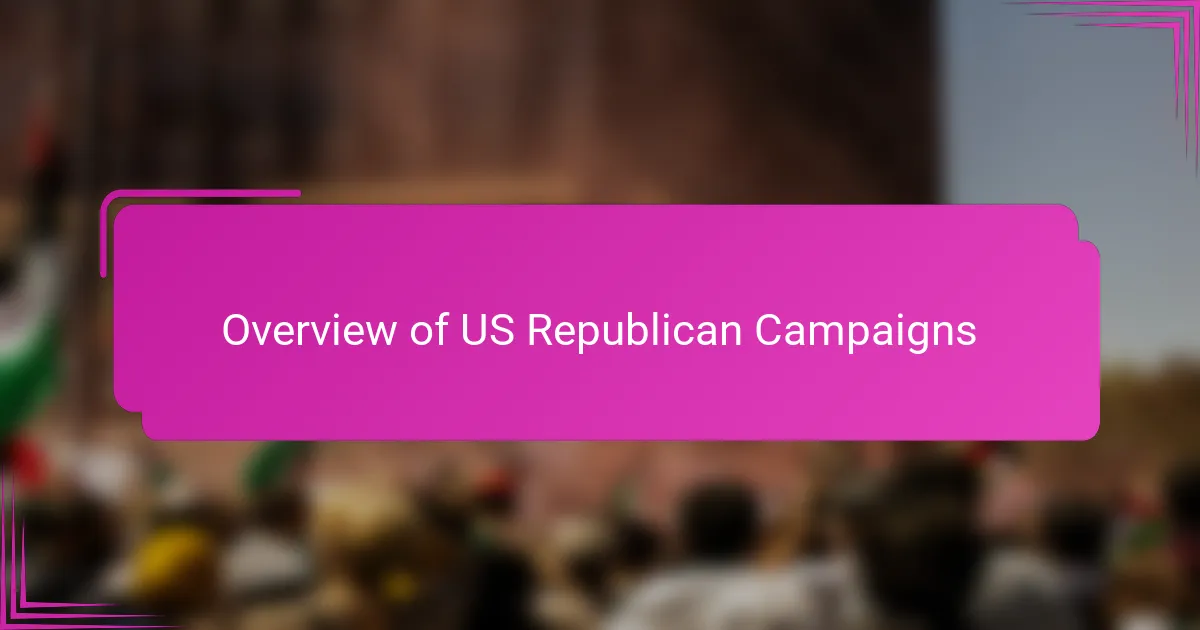
Overview of US Republican Campaigns
US Republican campaigns often harness a unique energy that’s both inspiring and intense. From my experience volunteering, there’s a clear focus on grassroots efforts and direct voter engagement, which creates a palpable sense of purpose. Have you ever wondered why these campaigns feel so energized despite the countless challenges they face?
What struck me most is the disciplined messaging and the strategic use of local networks. Republican campaigns tend to rely heavily on volunteers who share a deep commitment to the party’s values, which makes the work feel more like a shared mission than just a political push. This sense of camaraderie really makes a difference when the pressure mounts, and every door knocked on seems to count.
At the heart of these campaigns is a blend of tradition and adaptability. While there’s a strong adherence to core conservative principles, I noticed how teams are quick to innovate, especially when it comes to outreach tactics. It made me realize that successful campaigns are not just about ideas—they’re about execution powered by passionate people who believe in what they’re fighting for.
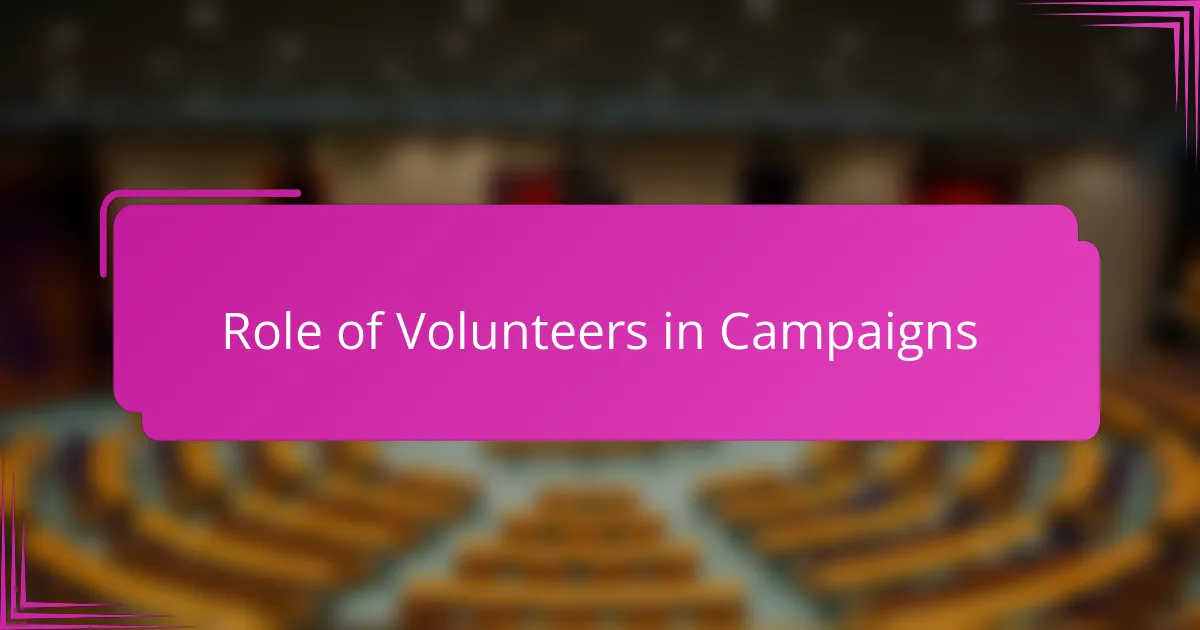
Role of Volunteers in Campaigns
Volunteers are the backbone of any Republican campaign I’ve been part of. Their enthusiasm and dedication fuel every event and outreach effort, turning abstract ideals into real conversations with voters. Have you ever been amazed at how a simple smile or handshake from a volunteer can open doors that might otherwise stay shut?
What fascinates me is how these volunteers don’t just show up—they dive in with a sense of ownership. I remember one weekend when rain drenched our canvassing team, yet no one wavered; their commitment felt almost contagious. It’s this resilience and shared belief that transforms the hardest days into some of the most rewarding moments on the trail.
In many ways, volunteers embody the very spirit of the campaign. They bring not only manpower but heart, connecting candidates to communities in ways that data and ads simply can’t replicate. Isn’t it powerful to think that grassroots efforts hinge on individuals willing to give their time simply because they believe change is possible?

Basics of Political Canvassing
Canvassing, at its core, is about one simple act: knocking on doors and starting conversations. From my experience, this isn’t just about delivering a script; it’s about listening and genuinely connecting with people. Have you ever found that when you take the time to hear someone’s story, the conversation naturally shifts from campaigning to a meaningful exchange?
I’ve noticed that preparation is key. Knowing the candidate’s core messages and common voter concerns helps make each interaction more impactful. But what surprises me is how flexible you need to be—no two doors, or voters, are the same, and adapting on the spot is part of what makes canvassing challenging yet rewarding.
Sometimes, the most memorable moments come from simply being present. Standing on a doorstep, facing uncertainty, and still choosing to engage—that’s where real political energy happens. Have you ever felt that rush when a hesitant voter suddenly opens up after a few honest words? Those moments remind me why canvassing matters beyond any campaign promise.
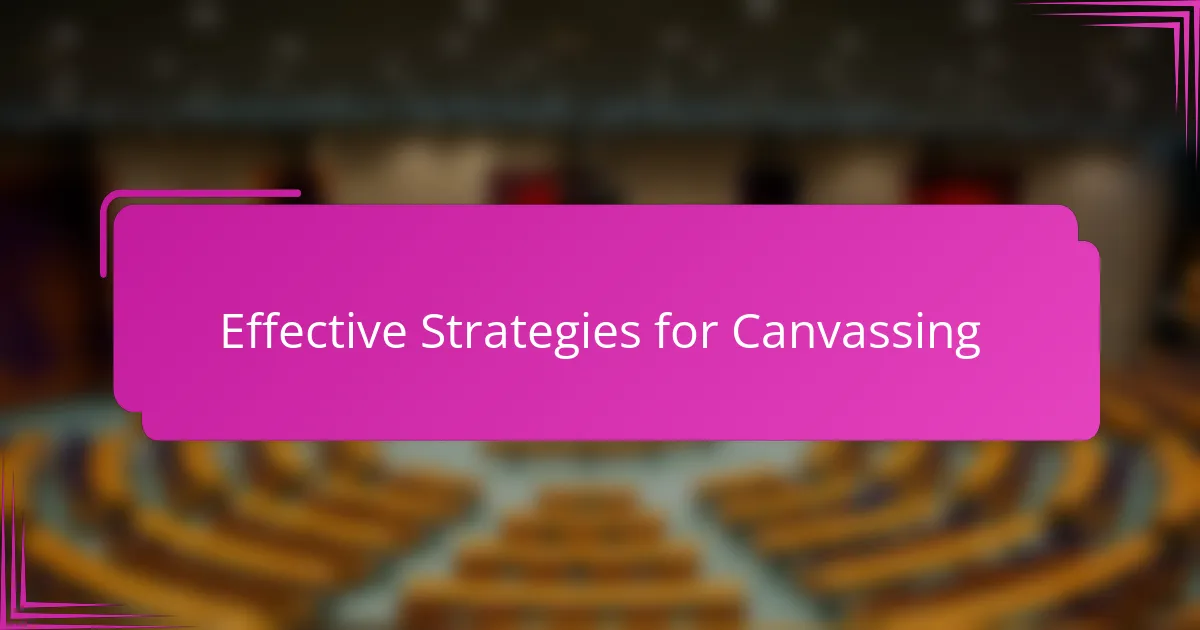
Effective Strategies for Canvassing
One strategy I found incredibly effective in canvassing with Republican volunteers is the power of personalization. Instead of sticking rigidly to a script, we tailored our conversations to reflect the values and concerns of each neighborhood. Have you ever noticed how a voter’s eyes light up when you acknowledge their specific worries? It’s a simple shift that transforms a routine pitch into a genuine dialogue.
Another approach that resonated with me was the use of paired canvassing. Working side-by-side with another volunteer not only boosted confidence but also allowed us to cover more ground efficiently. Plus, there’s something motivating about sharing the highs and lows of the day with a teammate, especially when a challenging encounter suddenly turns into a breakthrough.
I also learned that timing and consistency matter more than I expected. Repeated visits to the same households often build trust and open doors that were initially closed. It made me wonder—how often do we underestimate the value of persistence in politics? From my experience, those who show up consistently leave the most lasting impressions.

Experiences Working with Volunteers
Volunteers bring an energy to canvassing that’s hard to put into words. I recall one afternoon when a group’s enthusiasm lifted even my own spirits during a long day of knocking doors. Have you ever noticed how a single encouraging word from a teammate can make hours of work suddenly feel worthwhile?
What really stands out to me is how volunteers handle setbacks. I’ve seen a few get discouraged when faced with closed doors or brief exchanges, yet most bounce back quickly, ready to try again. Their resilience reminds me that canvassing isn’t about immediate wins but about steadily building connections over time.
Working alongside these volunteers also deepened my appreciation for diverse communication styles. Some have a natural way of relating to people that opens conversations smoothly, while others rely on genuine curiosity and patience. Do you think that variety makes the group stronger? From where I stand, it absolutely does.
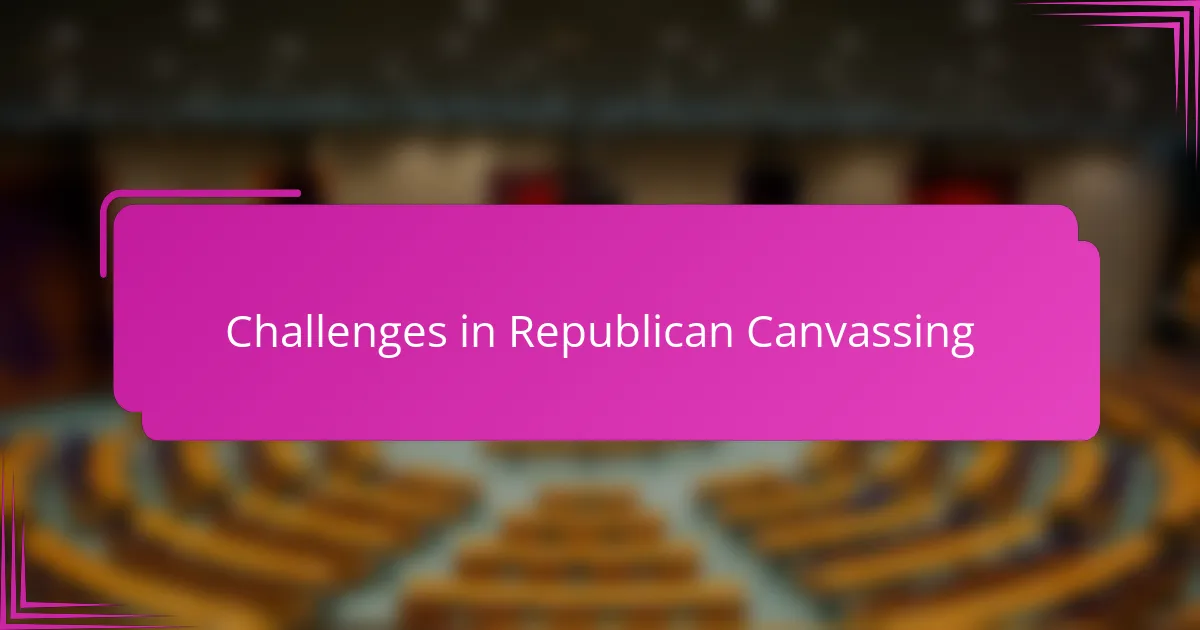
Challenges in Republican Canvassing
Canvassing with Republican volunteers comes with its share of hurdles, and I quickly realized that dealing with voter reluctance is one of the toughest. Many people are hesitant to engage or simply shut the door, leaving you wondering how to break through that wall of indifference. Have you ever felt the sting of a closed door after hours of effort? It’s frustrating, but it also teaches you patience and persistence in ways you don’t expect.
Another challenge I encountered is managing differing opinions within the team itself. While everyone shares the core Republican values, volunteers often have various personal styles and strategies, which can sometimes lead to miscommunications or conflicts. Navigating these moments requires empathy and a willingness to listen, which, honestly, strengthened our group more than any smooth sailing ever could.
Lastly, I noticed that external factors like weather and timing often throw unexpected obstacles into the mix. One rainy afternoon stands out when every step felt harder—not just physically, but emotionally, as the weather seemed to mirror our struggle. Yet, those tough days also build resilience and camaraderie; when you push through despite the odds, the victories, small as they may be, feel all the more meaningful.
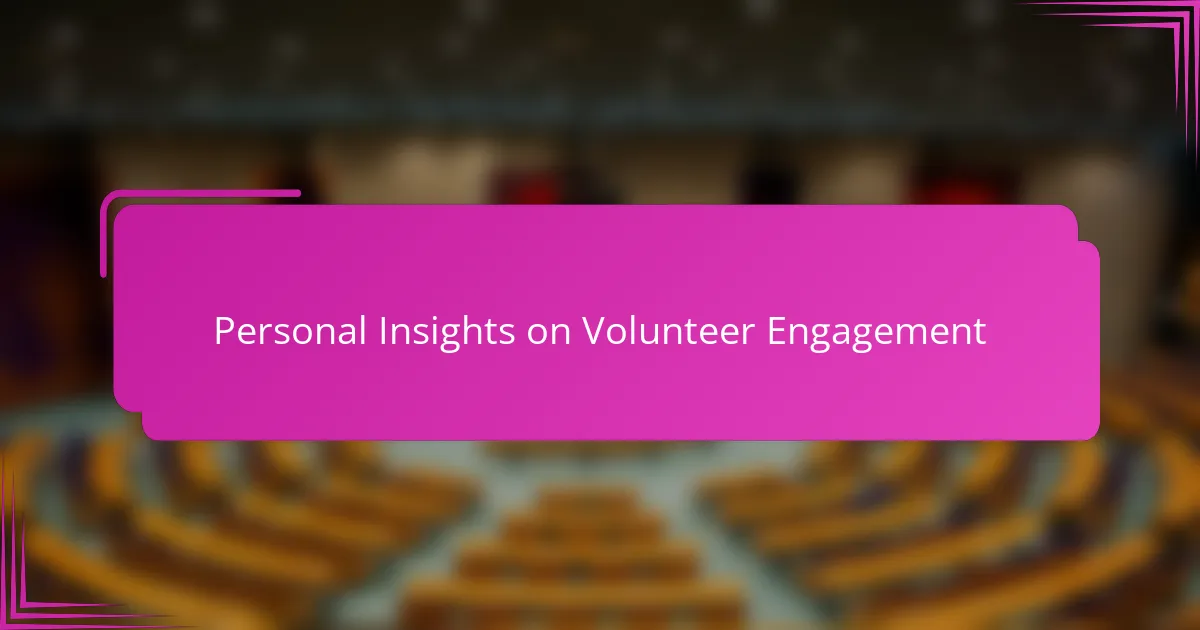
Personal Insights on Volunteer Engagement
Volunteer engagement is something I’ve come to value deeply through countless hours on the ground. When volunteers feel genuinely connected to the campaign’s mission, their energy shifts from obligation to passion. Have you ever witnessed how that spark transforms a hesitant group into a force that can’t be ignored? It’s remarkable and something I personally find inspiring every single time.
One thing I realized is that meaningful engagement isn’t just about organizing shifts or handing out materials—it’s about building relationships within the team. I remember a moment when a new volunteer shared a personal story related to the campaign’s goals, and suddenly, the group’s motivation leveled up. That kind of connection creates a sense of ownership, making every hour volunteered feel like an invested contribution rather than a task.
At the same time, I’ve noticed that recognizing small wins and appreciating individual efforts can keep morale strong even during tough stretches. Do you think it matters how we celebrate progress? From my experience, a quick word of thanks or acknowledging someone’s unique skills can reignite commitment in ways big speeches often miss. That personal touch can be the difference between a volunteer’s first shift and their tenth, or beyond.